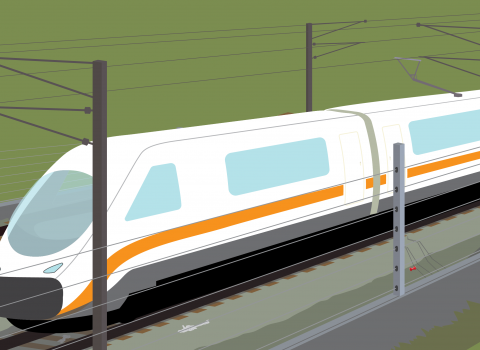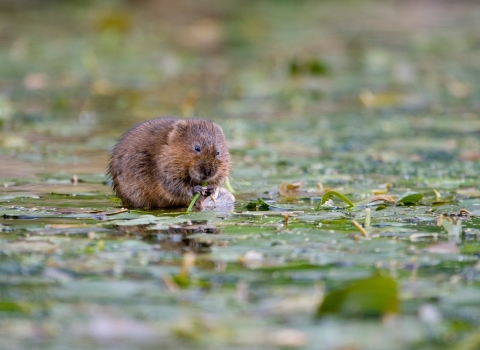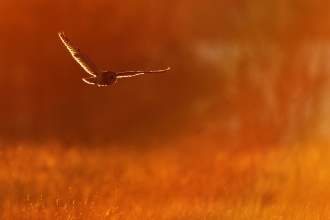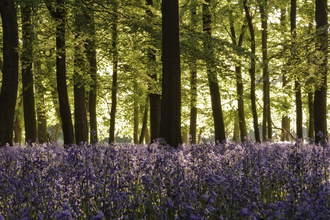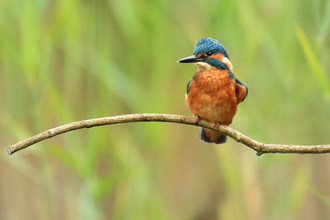Ecosystems permanently damaged. Irreplaceable habitats destroyed. Taxpayer's money spent on restoration wasted. Wildlife extinctions at a local level. This could be nature’s fate if the current plans for HS2 continue.
In the most comprehensive environmental assessment to date, we can reveal the sheer scale of potential damage from HS2. Our report shows that the deep cut HS2 will make across the landscape could stop nature’s recovery in its tracks. As the costs to nature escalate, we’re urging the Prime Minister to use his power now to stop and rethink this project, or the scar may never heal.
So far, HS2 Ltd has only pledged to 'no net loss' for wildlife. This does not help to solve the huge declines of 56 per cent of our most-loved plants and animals in recent decades. Proactive steps need to be taken to help nature's recovery and we continue to press HS2 Ltd and Government on this at a national level.
What is happening with HS2 in our region?
Northern Powerhouse Rail
On 18 November 2021, the UK Government proposed the creation of a new west-to-east railway route through our area; linking Liverpool Lime Street station via Warrington and Manchester city centre, to Marsden station in West Yorkshire.
No detailed route has been published yet, but we were concerned about the potential impact on our Moston Fairway nature reserve. This special wild retreat from the urban hustle and bustle lies next to the existing Manchester and Rochdale ‘slow’ railway, but sources suggest that the proposed new high-speed line would be tunnelled from Manchester Piccadilly under the conurbation. This might, however, still raise potential issues for us about siting of ventilation shafts and temporary work depots, and disposal of tunnel spoil. A new line would also most likely have to cross over, or tunnel beneath, Marsden Moor in the South Pennine Moors - an internationally important refuge for wildlife.
HS2 arrives in Parliament
On 24 January 2022, a ‘Hybrid Bill’, which would give HS2 Ltd the legal authority to build the Crewe to Manchester Piccadilly and Bamfurlong (Wigan) stages of High Speed 2 (known together as ‘HS2 Phase 2b West’), made its first appearance in Parliament. More detail and debate isn’t expected until June 2022 at the earliest.
HS2 Ltd's Environmental Assessment
HS2 Ltd’s Environmental Statement, assessing the impacts of the proposed route through Cheshire and Greater Manchester, was also published in late January 2022. We submitted our responses on 24 March, raising particular concerns about the continued lack of clarity about how and where at least 10 per cent biodiversity net gain would be delivered. We also questioned the ongoing and unnecessary uncertainty caused by HS2 Ltd’s continuing retention of the option to compulsorily acquire our Little Woolden Moss nature reserve for mitigation works.
The Golborne Link terminates
On 6 June 2022 it was announced that the 'Golborne Link' - a proposed route across the Great Manchester Wetlands to join the West Coast Main Line at Bamfurlong - was to be removed from the Hybrid Bill for HS2 Phase 2b. Our local wildlife in the Great Manchester Wetlands has, consequently, been spared the effects of this devastating ecological barrier. However, an alternative route for HS2 to join the West Coast Main Line may be delayed, rather than cancelled altogether: another, perhaps more damaging route towards Preston may come down the line later.
How will HS2 affect wildlife in our region?
Phase 2b of HS2 could cause deep ruptures across some of our regions most important wild places; destroying important habitats, displacing wildlife and hemming in species that need room to roam to survive. The route will affect:
Davenport Green Wood
A spur proposed to run past Manchester Airport into a new terminus next to Manchester Piccadilly, would be tunnelled under the City of Manchester, so avoiding immediate impact on a chain of ancient and secondary woodlands stretching towards the city centre. However, this is assuming the tunnel ventilation shafts and temporary construction yards also avoid those woods.
About a third of the ancient Davenport Green Wood, just across the boundary in Trafford Borough, is proposed to be destroyed to make way for the new Manchester Airport station, further degrading a shrinking woodland network that is already fragmented by the M56 motorway, urban and suburban development, and invasive plant species. The latest public consultation from HS2 Ltd (October 2020) proposes the destruction of even more of this wood (comments need to be made by 11 December 2020).
If we're to reverse the climate and nature crisis, protect 30% of land and sea for wildlife, and deliver shared ambitions for a Nature Recovery Network across Greater Manchester, HS2 needs a major rethink.

